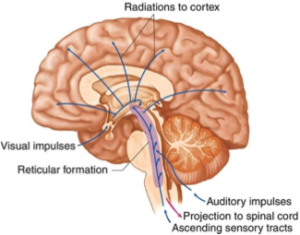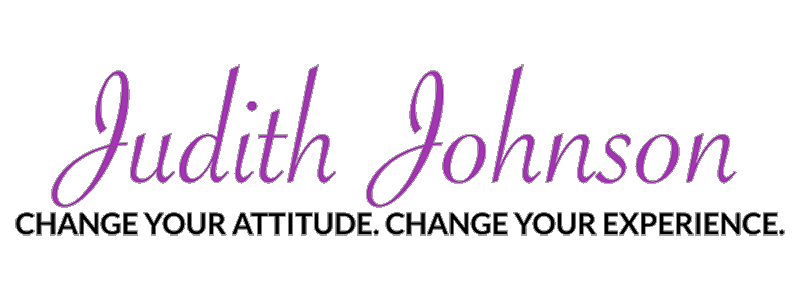Are you truly committed to mastering the art of maintaining your inner well-being? Do you regularly keep watch for such signs of imbalance as:
- Feeling like an outsider
- Never feeling like you are good enough
- Being aware of an inner emotional heaviness or depression
- Experiencing a repetitive pattern of disappointment
- The emotional heat of perpetual anger
- The inability to deeply connect with other people
- Blaming and judging yourself and others when things don’t go “your way.”
If any of these sound familiar, you will be delighted to know you can eliminate them all! Each and every one of these is the direct result of specific beliefs, fears, or misconceptions through which you are filtering incoming data in your Reticular Activating System.
The Reticular Activating System (RAS) is truly a marvel of human design. Here’s what it does:
- regulates our sleep-wake transitions
- coordinates and integrates our cardiovascular, respiratory, and motor response to external stimuli
- controls our coordination.
- processes the vast majority of our incoming sensory information.
Do you have any idea how much new information your brain is constantly processing? In his book, Strangers to Ourselves, Timothy Wilson quantifies the human brain’s unfathomable ability to process information as follows:
The unconscious processing abilities of the human brain are estimated at approximately 11 million pieces of information per second. Compare that to the estimate for conscious processing: about 40 pieces per second.
Without our RAS, this barrage would quite literally blow our minds! We live in a constant state of data bombardment. The fact that the vast majority of our data processing is unconscious is a great kindness in human design. However, this unconscious filtration system runs on autopilot while determining what incoming information we value, devalue, or fear based on our accumulated past reactions.
Like the default settings on our computers, our past data processing decisions function as self-fulfilling prophecies of our present and future data filtration, unless and until we bring them to awareness for reevaluation.

Mosby’s Medical Dictionary, 9th edition © 2009, Elsevier
Located in the brainstem, the RAS consists of a network of nerve pathways that form a link between the brain stem, which controls most of the body’s involuntary functions and reflexes, and the cerebral cortex, which is the seat of consciousness and our thinking ability. By connecting these two regions of the brain, the RAS functions as a filtering system for the mind and controls our attention, awareness, thinking, and emotions. The RAS quite literally causes us to construct our own internal worldview.
While we share our physical world, we each have our very own unique inner world. What we are seeing is not as it is in the physical world, but as it is after being processed through our inner filters. Our sense of truth is relative to our inner filtration system.
The good news: you have the power to change the settings on your filtration system. Through increased awareness of how this system works and by paying attention to all forms of imbalance you experience, you have the power to change your inner and outer experiences.
We are biased to the status quo of how we already see things. Believing that this internally-generated version of the truth is the empirical truth blinds us from reality. One of the consequences of this misconception is that we believe that anyone whose perspective or way of being is different than ours is ‘wrong.’ What we imagine to be our perception of empirical truth is merely a reflection of an aggregated inner point of view.
Within the privacy of our own consciousness – in the theater of our minds – we create our own sense of reality, which we inhabit and relate to as if it is REALITY. It is important to remember that no one else on this planet has an identical inner world to the one you live in. The assumption that others see the world as we do is the source of an enormous amount of our misunderstanding about ourselves and each other.
The majority of our perceptions and thoughts are merely the product of our primarily unconscious sensory data filtration system. They exist only in our private inner world.
Understanding the design of the data processing function of the RAS empowers us to do some renovations to the mental and emotional scaffolding upon which we are living our lives. We access this opportunity by paying attention to where things are not working well for us in our lives. By identifying the underlying conditioning, beliefs, assumptions, expectations, prejudices, preferences, fears, memories, judgments, illusions, delusions, hopes, and dreams upon which our perceptions are based, we bring these autopilot ways of responding to our experiences into conscious awareness. Only then, do we have the option to challenge our default settings and change them as appropriate.
Another way of saying this is we need to clean our data processing filters. In doing so, we can update our default settings. Our freedom lies in recognizing that our RAS makes our lives a self-fulfilling prophecy. It is simply doing what we tell it to do. When we update our default settings, we are redirecting the perspective of our RAS so that it will now validate our new point of view.
Consider this simple example. Let’s say you are intentionally losing weight and get to within one pound of what you view as a major threshold. You plateau there for six weeks. You’re doing everything “right” in terms of complying with your program. What’s going on? Upon evaluation of your RAS filters, you notice that you hold a belief that crossing this particular one-pound threshold will put you into a level of success that you have not previously experienced. Underneath that you discover that you are fearful and do not trust yourself to maintain this success. In this context, your weight loss plateau makes perfect sense. Once you have identified the source of resistance to further progress, you are able to bring more of this pattern into conscious awareness and to challenge yourself to see your situation through new eyes. You see exactly what beliefs and fears have been preventing you from moving forward and choose to replace them with a new, affirming beliefs and assumptions. In time, you break through the plateau and begin to lose more weight.
Bringing unconscious patterns into awareness empowers us to upgrade our default settings in such a way that upgrades the quality of our inner life.
Watch for Part 2 of this blog to learn more keys to unlocking your inner well-being.







